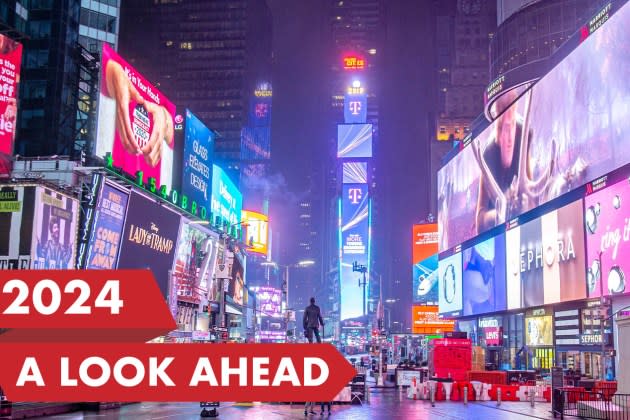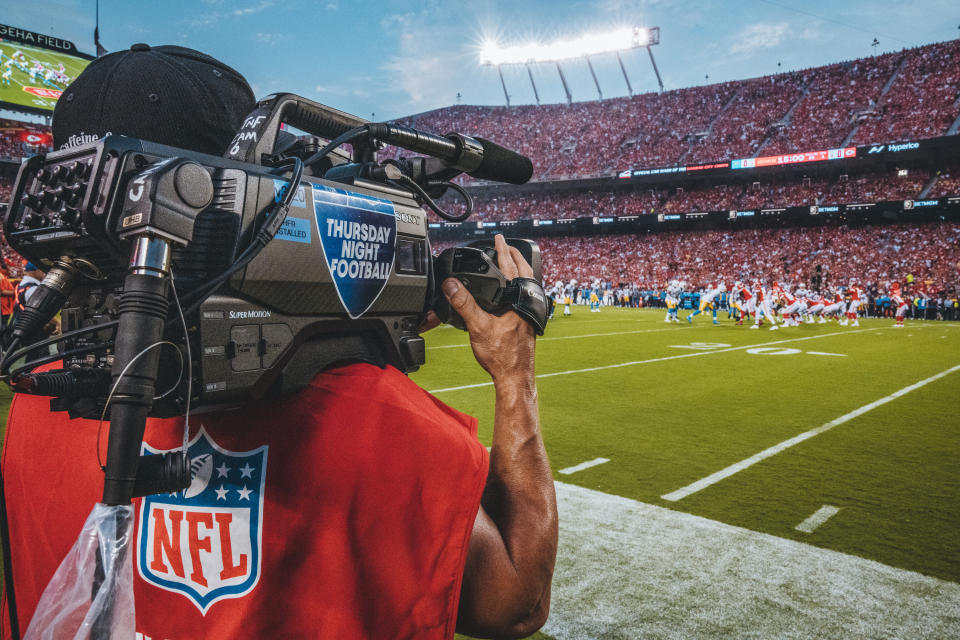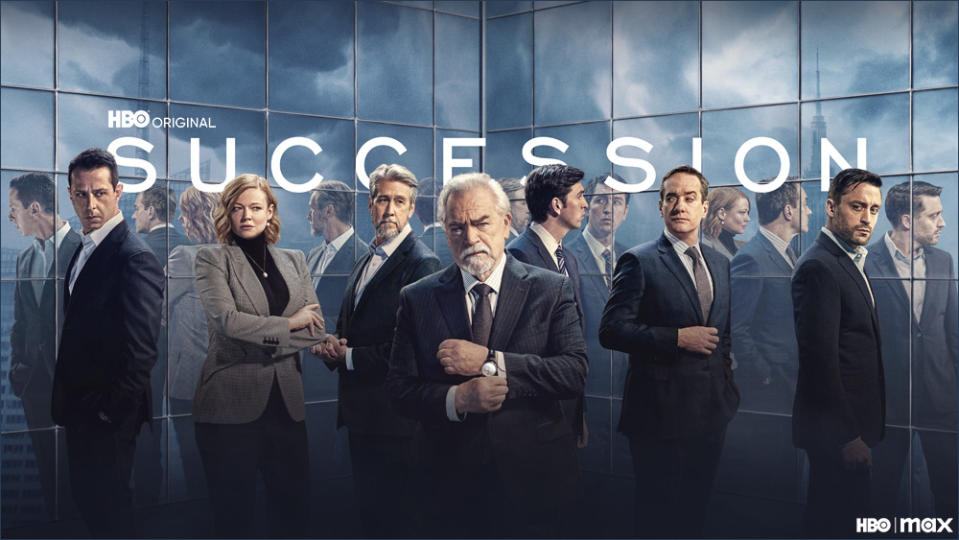Advertisers Will Tune In To Streaming In 2024 As More Services Court Brand Dollars

Las Vegas trade show CES always kicks off the new year in gadget-happy style, showcasing the innovations that will (sometimes) define the future.
Alongside all of the autonomous vehicles and 8K drone cameras at this year’s January confab, something less tangible but just as significant will take up space: streaming advertising. Disney, which launched an ad-supported tier of Disney+ a year ago and now fully owns veteran ad purveyor Hulu, will have a sizable presence, as will players like Roku, Paramount Global, NBCUniversal and Amazon. Netflix, which entered the ad game just before Disney, will have its first-ever booth on the CES show floor.
More from Deadline
After The “Great Netflix Correction”, Streaming Looks To Find New Pragmatic Footing
2024 Premiere Dates For New & Returning Series On Broadcast, Cable & Streaming
Showbiz Stocks 2023: Tech Surges, Big Media Companies Weather Strikes And Streaming Gets A Reboot
Why so many words from streaming sponsors all of a sudden? That age-old show business concept: heat.
“One reason why the streaming landscape has exploded the way it has is that streaming allows producers to take more of a chance,” said Mike Fisher, Executive Director, Investment Innovation at media agency giant GroupM, in an interview with Deadline. The more big swings by talent, he reasons, the greater the viewer engagement, ergo more opportunities for brand messages. Digital platforms like TikTok may be surging, but there’s nothing quite like the living room. “In studies 25 years ago and in studies today, the TV is still the trusted medium for viewers to be served advertising,” Fisher said.
Along with Netflix and Amazon, Amazon’s Prime Video will begin showing ads on scripted films and TV shows in early 2024. Apple TV+ remains the only major subscription streaming outlet without an ad tier, though rumors have persisted for the past couple of years it could join the chase. And then there is a burgeoning realm of free outlets and FAST purveyors, among them Pluto, Tubi and Xumo, all of which are owned by major media companies.
Brian Wieser, a former Wall Street analyst and ad exec who is now principal at research firm Madison and Wall, sees a few negatives to go with the positives and momentum in streaming. One concern is its smaller capacity. Instead of 18 minutes an hour, a common ad load on linear broadcast and cable networks, streaming is in the 4- to 5-minute range. Cord-cutting, too, is siphoning millions of customers away from pay-TV every year. While some are moving to internet-delivered bundles like YouTube TV, many are just focusing on a handful of streaming outlets. “The consequences of those changes could be meaningful for advertising,” Wieser wrote in a report forecasting 2024 trends. “Shifts to streaming makes it almost certain to me that the tonnage of advertising those consumers are exposed to will go down significantly as a result.”
National TV advertising will grow by low-single-digit percentages in the coming years, Wieser believes. Next year will get a shot in the arm from the Olympics and the election, reaching $70.9 billion, before falling back to $61.9 billion in 2025. In his analysis and those of other ad-industry trackers, gains in streaming are by and large being offset by declines in the traditional business.
Sports remains a beacon of hope, ramping up its streaming profile while also keeping the lights on for linear TV. Amazon, the No. 3 digital ad seller behind Google and Facebook, has been gradually closing the gap, in part because of Prime Video’s gains. The service kicked off exclusive streams of Thursday Night Football in 2022 and has used the NFL games to scale up its overall capacity. In a recent note to clients, Wedbush analyst Scott Devitt estimated that connected-TV advertising is growing at a nearly 15% annual clip. Given the company’s global footprint, the ad rollout next year could bring in $6.5 billion in new revenue per year, he predicts.

As others join Prime Video in the live sports race, the task of executing a streaming ad experience is far from a straightforward affair. Unlike on-demand streaming, which is handled one by one for viewers pulling up programs to watch, sports has to be experienced live.
David Dworin, Chief Product Officer of Comcast-owned ad tech firm FreeWheel, says “the risk is huge” in sports because the tools of automation and programmatic buying generally cannot be deployed. Speaking at the recent TV Now conference hosted by Paramount Global, Dworin said any missteps or tech glitches can mean advertisers “miss the window with millions of viewers.”
Programmatic advertising gained prominence as an online phenomenon as the internet evolved. It has been making an occasionally awkward transition to video. It essentially looks to match buyers and sellers in a real-time fashion without the need for a sales transaction brokered by human workers. While the radar is sometimes errant, these computer-guided tools use the array of data points a viewer is putting out in order to serve them relevant ads. If they love to cook, are shopping for a car and have planned a ski vacation, they should see ads according to those activities and preferences.
Appearing onstage with Dworin at TV Now, Jill Steinhauser, SVP Ad Sales Planning and Operations at Warner Bros Discovery, said her company still relies on human staff, though it is looking to explore new technology. Buyers looking to get time on marquee Max shows like Succession or The Last of Us largely do so the old-fashioned way. “It’s just too premium of content to risk with where we are today with programmatic transactions,” she said. Across all of Max beyond the vaunted HBO zone (which was off-limits to brands when the service formerly called HBO Max launched advertising in 2021), she said programmatic “plays a really healthy role in terms of monetization.”

Measurement, the dull-sounding term for the third-party tracking of viewership of programs and ads, is a crucial piece of the streaming marketplace, but it hasn’t yet fallen snugly into place. Nielsen, which remains the dominant measurement provider, has struggled to evolve its decades-old methods and infrastructure for the streaming era. Nevertheless, speaking from the buy side, Fisher said GroupM is “optimistic” that true currency in streaming — agreed-upon data that will enable billions of dollars to change hands — is close at hand.
Last fall, the upfront marketplace (where crucial bets are made by advertisers months ahead of when programming appears on screens) “was not ready to move from the hundreds of millions to the billions to be transacted,” Fisher said. Areas like “back-end tools, billing workflows … that’s the work we’ve got ahead of us,” not just for measurement companies but for everyone with skin in the game.
In the living room, there are also improvements to be made of the viewer experience. Repetition of ads, which is supposed to be reined in by something known as “frequency capping,” also gets a lot of mention by streaming skeptics, probably because of the lighter overall ad load. Freewheel’s Dworin said he says the sense of viewer backlash is overstated. “Consumers remember ad repetition worse than it is,” he said. “They think they saw it twice in a row and what they meant was, ‘Every pod started with it’ or ‘I saw it twice tonight,’ which is really hard to manage for.” (And any NFL fan who has been hit by wave after wave of appearances by Jake from State Farm or musical Burger King spots can attest that repetition is not a consideration for streaming alone.)
Those in the streaming ad trenches are dealing with massive complexity compared with the linear ecosystem. Shared networks are used by a mosaic of programmers, distributors and vendors. Bit by bit, though, and to a striking degree compared to a few years back when gloom-and-doom forecasts suggested the rise of Netflix meant the eventual death of video advertising, viewers are getting comfortable with the tradeoff of paying less and getting ads. “The fact that you’ve been being served ads and you don’t see that as intrusive,” Fisher said, “that’s a huge win for us.”
Marketers, too, know that they need to fish where the fish are.
Stefan Van Engen, VP Content Programming and Partnerships at Xumo, recalled at TV Now when the company (now owned by Comcast) was once a startup working on the frontier of streaming ads. Van Engen and his colleagues, after creating a white-label technology for smart-TV firm LG, used to walk around with a TV set and show ad buyers how ads looked in streaming. “There was always confusion,” he said. People would ask, “‘Is this a digital buy? Is it a video buy? Is it a traditional buy?’ And I think, thankfully, those days are gone. This is a video buy across the board and it’s a premium buy.”
Best of Deadline
2023 Premiere Dates For New & Returning Series On Broadcast, Cable & Streaming
2023-24 Awards Season Calendar - Dates For Oscars, Emmys, Grammys, Tonys, Guilds & More
Sign up for Deadline's Newsletter. For the latest news, follow us on Facebook, Twitter, and Instagram.

